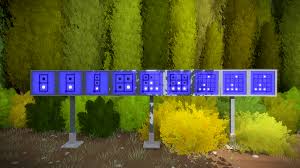
In the video gaming world, it is very rare that a game comes along and so thoroughly captures the attention, adoration, and accolades of both gamers (consumers) and the makers of games alike like
The Witness has. Having received the highest marks in reviews across the board (gaming stalwart IGN gave it a 10 out of 10 - which means that the reviewer had to actually sit through a panel of their peers and defend their rating in order for the 10 to be published),
The Witness took the gaming world, full of first person shooters and high-intensity multi-player games and slowed it down considerably - it is purely a puzzle-solving game, with subtle philosophy thrown in there.The game took more than eight years to create and produce, and creator Jonathan Blow painstakingly created a world of bright visual colors that takes you on a journey of high-cerebral thought processes. Each puzzle you solve in each different location helps you solve the next puzzle. They get more and more difficult as you get deeper into the game, and sometimes you get stuck on a puzzle for what seems like an eternity, but you draw on past "rules" learned from previously solved puzzles, and once you solve a particularly hard one, it is the best feeling in the world.

Jonathan Blow "rejected game design rules" and took a relatively unheard of approach to creating and designing this game. He and his team had relatively lax work hours, often with late morning starts and Thursdays and Fridays being optional work days. He said he wanted to create a work environment that stimulated and encouraged creativity and didn't stifle it with strenuous and taxing "crunch periods" at larger gaming developing companies. He wanted to subvert the trend of video games being so heavily story/plot-driven and instead focus on...puzzles. And more puzzles. Puzzles just for the sake of it, really - there's no "narrative pay-off". Blow drew inspiration for
The Witness through a similar rejecting-story-building game called
Kingdom, yet
The Witness is so unique in it's own way that it is almost an insult to compare it to any other game.

Gardner writes in Chapter 2 on "Cognitive Approaches to Creativity" about something called "the tumor puzzle", a creativity problem that Gestalt-like psychologists give to test creativity and intelligence in their subjects. The "tumor problem" is described as having to "deal with a pernicious tumor without destroying the vital surrounding tissue" - which sounds an awful lot like the puzzles you have to solve in
The Witness - figuring out the method and pattern of getting around the green stars, or the exclusion of all black circles but the inclusion of orange circles, in order to get from Point A to Point B.
The Witness is in its entirety a lesson on creativity. While Gardner writes a little further down in the chapter that these tests have little demonstrable relation to creativity outside the testing environment, I like to think that those people that are drawn to and finish playing
The Witness are creative in their own ways, and actually have their creativity stretched in ways that haven't happened before - all thanks to doing Jonathan Blow's "tumor problem" again and again.
Cited:
Creating Minds by H. Gardner (1993)
The Witness Review by Chloi Rad (2016 http://www.ign.com/articles/2016/01/25/the-witness-review)
The Witness: How Jonathan Blow Rejected Game Design Rules to Create a Masterpiece by Jordan Erica Webber (2016, http://www.theguardian.com/technology/2016/feb/09/the-witness-how-jonathan-blow-rejected-game-design-rules-to-make-a-masterpiece)
I think that this is overall a really great blog post! :) This video game exercises the mind like no other video game out there and helps people practice their creativity by thinking outside the box for the solutions. The creator's creativity flows into his workspace, making it an extraordinary business environment that helps progress productivity. Natalie, you really tie in the reading from Gardner about the 'tumor problem' very well with this creative concept.
ReplyDelete